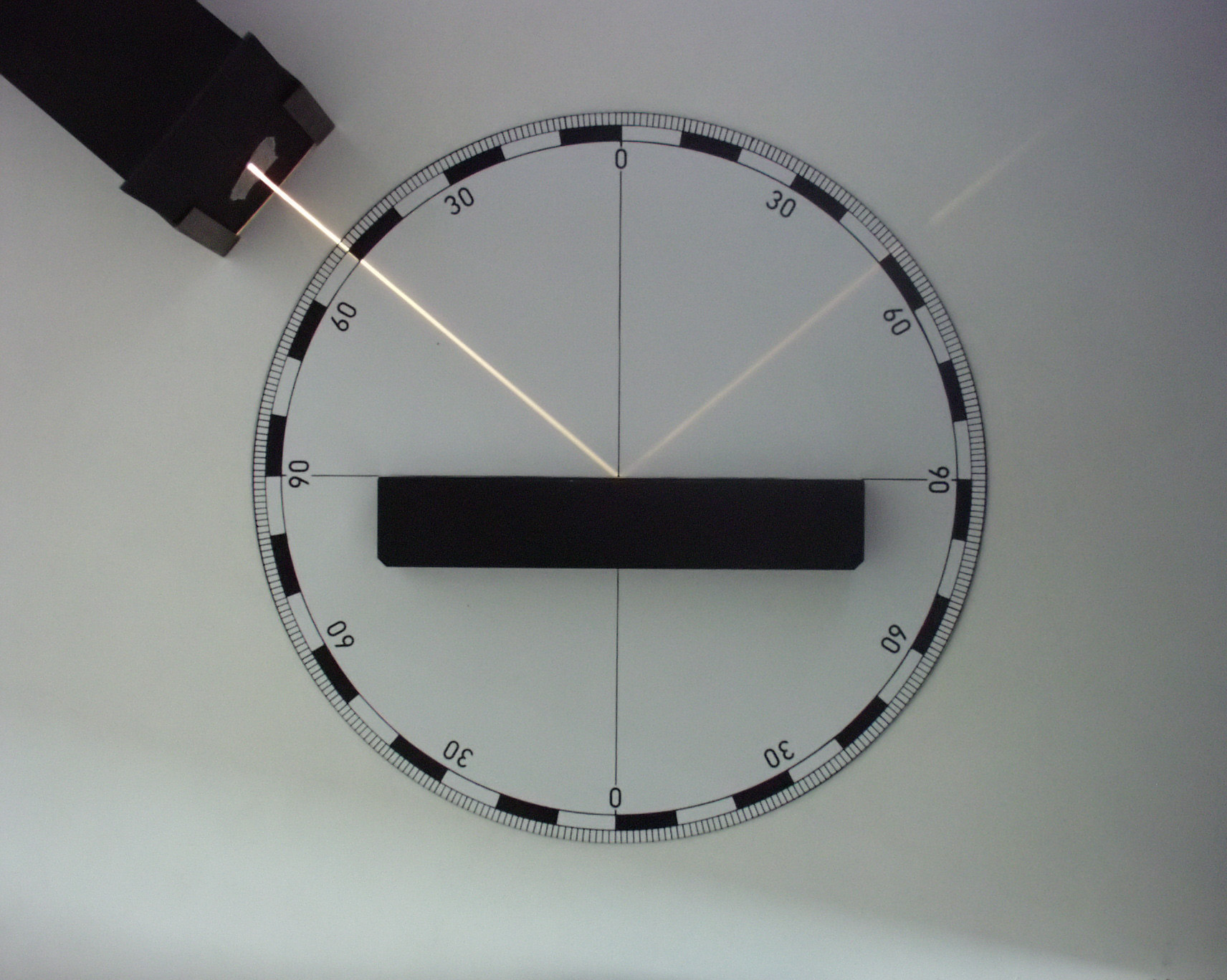13.2-Laws of Reflection
13.2-Laws of Reflection Important Formulae
You are currently studying
Grade 8 → Science → Light → 13.2-Laws of Reflection
13.2 - Laws of Reflection
- The angle of incidence ($\theta_i$) is equal to the angle of reflection ($\theta_r$).
- Both the incident ray, the reflected ray, and the normal lie in the same plane.
- The incident ray, normal, and reflected ray are on opposite sides of the mirror.
- The angle of incidence is measured between the incident ray and the normal.
- The angle of reflection is measured between the reflected ray and the normal.
13.2 Laws of Reflection
The laws of reflection describe how light behaves when it reflects off a surface. These laws are fundamental to understanding how mirrors, lenses, and other optical devices work. There are two key laws of reflection:
1. The First Law of Reflection
The first law states that the incident ray, the reflected ray, and the normal to the surface at the point of incidence all lie in the same plane. This means that the rays and the normal are coplanar.
2. The Second Law of Reflection
The second law of reflection states that the angle of incidence is equal to the angle of reflection. This means that:
Angle of incidence = Angle of reflection
In terms of notation, this can be written as:
$ \angle i = \angle r $
Explanation of Terms
- Incident ray: The ray of light that strikes the reflective surface.
- Reflected ray: The ray of light that bounces off the reflective surface.
- Normal: An imaginary line perpendicular to the surface at the point where the incident ray strikes.
- Angle of incidence (i): The angle between the incident ray and the normal.
- Angle of reflection (r): The angle between the reflected ray and the normal.
Reflection on Plane Mirrors
When a light ray strikes a smooth, flat surface (like a plane mirror), the laws of reflection apply. The incident ray and the reflected ray will always make equal angles with the normal. The angle between the incident ray and the reflected ray will be twice the angle of incidence.
Mathematical Representation of Reflection
The relationship between the incident ray, reflected ray, and the normal can be expressed as:
$ \angle i = \angle r $
Where:
- $ i $ is the angle of incidence
- $ r $ is the angle of reflection
For instance, if the angle of incidence is 30°, the angle of reflection will also be 30°.
Practical Applications of Laws of Reflection
These laws are the foundation of many optical devices, including:
- Mirrors: Used in personal grooming, optical instruments, and reflecting telescopes.
- Periscopes: Devices that allow observation from a concealed or protected position, commonly used in submarines.
- Optical fibers: Transmission of light signals by total internal reflection.
Characteristics of Reflected Images
In a plane mirror, the reflected image has the following characteristics:
- The image is the same size as the object (it is an "identical" image).
- The image is laterally inverted (left becomes right).
- The image is virtual (it cannot be captured on a screen and appears behind the mirror).
- The image is upright (it has the same orientation as the object).

Zátonyi Sándor (ifj.), CC BY-SA 3.0, via Wikimedia Commons
13.2-प्रतिबिंबन के नियम (Laws of Reflection)
प्रकाश को परावर्तित करते समय जो कुछ घटनाएँ होती हैं, उन्हें हम प्रतिबिंबन (Reflection) के रूप में जानते हैं। प्रतिबिंबन के दो मुख्य नियम होते हैं जो प्रकाश की दिशा और गति को समझने में सहायक होते हैं। इन नियमों का अनुसरण सभी प्रकार के प्रतिबिंबन में किया जाता है।
1. पहला नियम: प्रतिबिंबन की घटना में, प्रकाश की रेखा (incident ray), परावर्तित रेखा (reflected ray) और परावर्तन स्थल (point of reflection) एक ही समतल (plane) में होते हैं।
यह नियम हमें यह बताता है कि यदि कोई प्रकाश किरण एक दर्पण पर गिरती है, तो वह परावर्तित किरण, गिरने वाली किरण और दर्पण का परावर्तन स्थल, सभी एक ही समतल में होंगे।
2. दूसरा नियम: परावर्तन कोण (angle of reflection) हमेशा गिरने के कोण (angle of incidence) के बराबर होता है।
यह नियम यह कहता है कि यदि कोई प्रकाश किरण एक सतह पर गिरती है और वह परावर्तित होती है, तो परावर्तित किरण और गिरने वाली किरण के बीच का कोण समान होता है। इसे निम्नलिखित सूत्र द्वारा व्यक्त किया जाता है:
गिरने का कोण $i$ और परावर्तित किरण का कोण $r$ के लिए:
$$ i = r $$यहाँ, $i$ गिरने का कोण (angle of incidence) है और $r$ परावर्तित किरण का कोण (angle of reflection) है।
इन दोनों नियमों के माध्यम से हम यह समझ सकते हैं कि किसी भी सतह पर गिरने वाली प्रकाश किरण, एक निश्चित दिशा में परावर्तित होती है।
गिरने का कोण (Angle of Incidence): यह वह कोण है जो गिरने वाली किरण और दर्पण की सतह के साथ बनता है। इसे $i$ से व्यक्त किया जाता है।
परावर्तित किरण का कोण (Angle of Reflection): यह वह कोण है जो परावर्तित किरण और दर्पण की सतह के साथ बनता है। इसे $r$ से व्यक्त किया जाता है।
सारांश में, प्रतिबिंबन के दोनों नियम यह सुनिश्चित करते हैं कि प्रकाश की दिशा और गति पर एक निश्चित नियंत्रण होता है।
